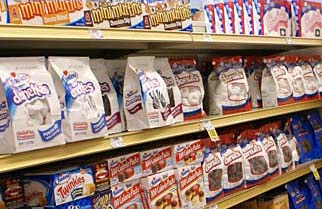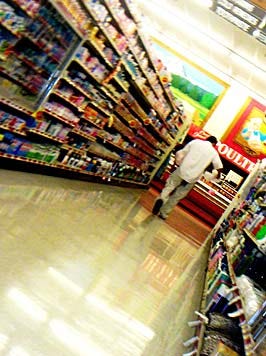How to improve your packaging’s in-store branding power
April 2, 2015

 Branding was relatively easy in the 1960s, with TV networks offering affordable 60-second commercial spots that provided plenty of time for product sell. By the time the 1970s rolled around, marketers complained when they had to cut messages down to fit 45-second ads. In the 1980s, ads had condensed into expensive 30-second spots that left marketers grumbling.
Branding was relatively easy in the 1960s, with TV networks offering affordable 60-second commercial spots that provided plenty of time for product sell. By the time the 1970s rolled around, marketers complained when they had to cut messages down to fit 45-second ads. In the 1980s, ads had condensed into expensive 30-second spots that left marketers grumbling.
Today, that 30-second ad is expensive, forcing many brands to find alternative solutions to establishing and communicating product distinctiveness and benefits. Some, smartly so, have embraced some alternative media forms, such as the Internet and infomercials.
Undeniably, one of today’s most powerful branding opportunities, and the only one many brands can afford, is readily available through the brand’s in-store presence and often includes creative packaging, display material, and shelf talkers. More consumers see and have the opportunity to interact with a Brand’s packaging than any other available advertising medium.
That’s right, I said advertising medium. I am often surprised to find that many companies fail to see their packaging in this light. The grocery store provides a powerful opportunity for Branding among those marketers who embrace its possibilities. Unfortunately, many marketers who would rigorously test any commercial before putting it on air, base go/no go decisions on product packaging using either “corporate wisdom” or qualitative testing.
Making packaging design choices for the right reasons
Final packaging sometimes shows up on store shelves simply because management “likes it” best, or “the color scheme is better than other options considered.” A brief glimpse of any supermarket aisle will reveal an abundance of blue or white packages. Consumers generally indicate a preference for blue, an easy background color to include; and white conveys purity and is easy to overlay with copy. Do these packages stand out? Do they successfully convey any brand differentiation?
No one, single place is better suited to communicating a Brand’s message than in the store. Everyone shops. Category shoppers generally go down specific aisles with regularity. What would cause a consumer to stop and look at a particular package? What would they take away from it if they did? Who better to ask than the consumers themselves.
There are many issues to consider when using in-store materials as the primary branding communication:
(1) How visible is the packaging, that is, how well does it stand out from the competitive set?
(2) Will the packaging attract attention, affording the necessary opportunity to “sell” consumers?
(3) Does the packaging effectively communicate the Brand’s equity and benefits?
(4) Does the packaging realistically communicate these benefits in direct proportion to consumer importance in making purchase decisions?
These are all relatively rational issues. On the other side of the coin, there are primary emotional benefits your packaging should be “selling.” Do the in-store materials present the product in the best conceivable light? Does it proactively encourage consumers to like/demand the Brand? What emotional consumer responses are generated by the packaging? And, how do these compare with original brand objectives?
The question marketers should be asking is, “how can I successfully use my Brand’s packaging to best convey my product’s rational and emotional benefits, as well as deliver the tonality my Brand needs to set itself apart from the competition?”
Strong marketing requires better testing of packaging design
When packaging is thought of as an advertising medium, out of necessity, testing must become more rigorous. Quantitatively testing Brand packaging against other options and major competitors is a critical component to ensuring that the packaging breaks through the clutter and “sells” the Brand’s specific product benefits.
One of the recent breakthroughs in advertising testing is that of the measurement of the emotional appeal to consumers. Building brands is largely a matter of emotional bonding between the brand and consumers. Advertising facilitates this bonding. And, as an advertising medium, packaging needs to help accomplish this critical objective.
This methodology uses unarticulated emotional elicitation – called the eFactor® -- to understand the emotional appeal of packaging, as well as advertising. Based on Robert Plutchik’s theories on emotional reactions, we can identify emotional strengths of packaging communication by identifying both the positive and negative emotions brought out by the packaging and the intensity of these reactions.
A communication check also enables us to understand if the Brand’s communication objectives are being met, and if the packaging is supporting the Brand’s equity. And, normative measures enable us to understand direct appeal and distinctiveness to the consumer. Thus, marketers now have the tools to ensure that their in-store Branding is as good as it can be, and as powerful as it needs to be to help them realize the power of in-store branding, particularly germane as more “store brands” are competing with “leading brands” and leading brands competing with each other.
Shelf talkers, display units and materials, and any other in-store materials that draw attention to the Brand’s product and “highlight and sell” both benefits and points of difference are also critical elements for in-store branding.
The winners are those marketers who understand that communicating the Brand holistically through the best in-store presence that can be developed is the key to establishing successful Brands in the 21st century.
Jack Gordon is the President of AcuPOLL Research, Inc., a product, advertising and packaging research company.
AcuPOLL
Allison Brinkman
Tel: 859-291-4302
Photo by lanuiop; Copyright creative commons with attribution
About the Author(s)
You May Also Like


